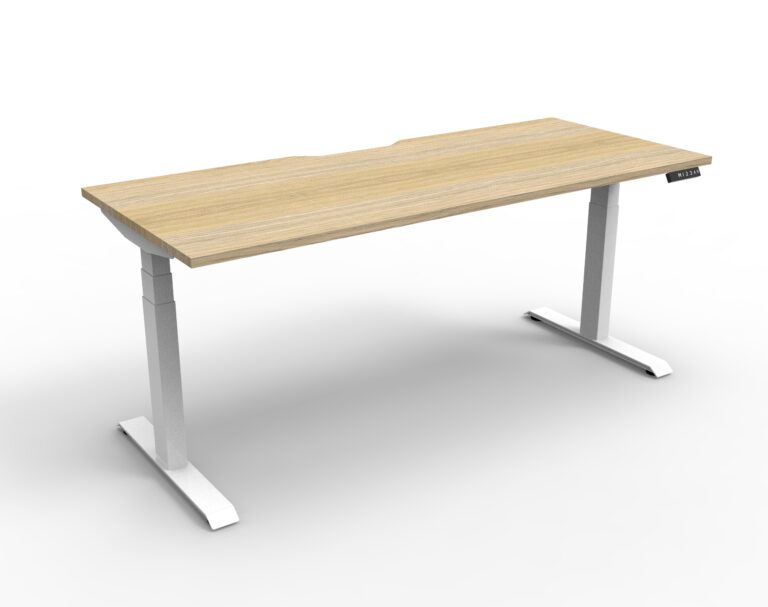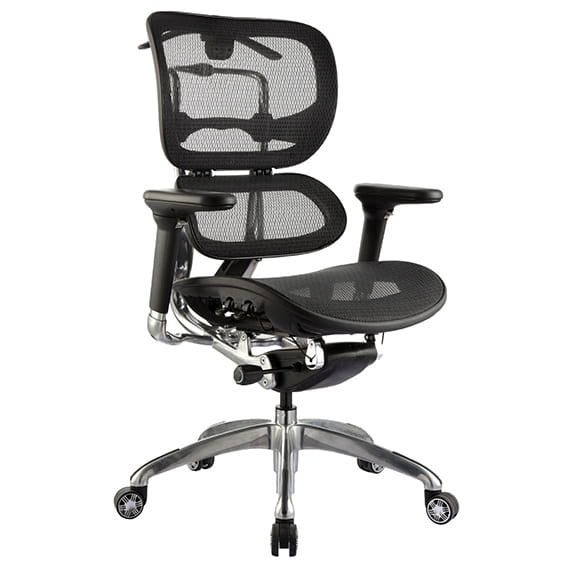
Office chairs play a crucial role in providing comfort and support throughout the workday. With various designs and features, these chairs aim to enhance productivity by promoting proper posture and reducing strain on the body.
Ergonomic office chairs are specifically designed to offer adjustable features such as lumbar support, seat height, and armrests, allowing for customization according to individual preferences and needs.
For those looking to furnish their home office or workplace, there are numerous options to choose from. Office chairs by Prima offer a wide range of styles and functionalities to suit various budgets and tastes. From executive chairs to sleek, modern designs, you’ll be sure to the perfect chair that combines aesthetics with comfort and practicality.
In selecting the ideal office chair, it is important to consider factors such as ease of use, durability, and adaptability to different body types. By prioritising comfort and ergonomics, employees can maintain their focus and productivity, leading to a healthier and more efficient work environment.
Understanding Ergonomics
Ergonomics is the study of designing products, systems, and environments to fit the people who interact with them. It aims to enhance productivity, safety, and comfort in the workplace by focusing on human capabilities and limitations. When talking about office chairs, ergonomic design plays an important role in promoting better posture, reducing discomfort, and preventing musculoskeletal disorders related to prolonged sitting.
An ergonomic office chair should fit the body contours and support the back, neck, and shoulders, while providing room for adjustment. Proper chair selection considers factors like body height, weight, and desk measurements. It is essential to adjust the seat height to allow the user to sit with their feet comfortably on the floor or a footrest, promoting leg movement and reducing strain on the lower back.
The backrest should have a tilt mechanism, enabling the user to recline with a hip angle between 100 and 120 degrees. This feature allows the user to relax and maintain a natural spine curve. Armrests should also be adjustable to provide support for the forearms and ensure that the shoulders are in a relaxed position while working.
Understanding the importance of ergonomics in office settings goes beyond selecting the right chair. The entire workspace should be designed in a manner that encourages proper posture, minimizes the risk of injuries, and reduces physical discomfort. This may involve adjusting the height of workstations, using monitor stands or monitor arms, and incorporating ergonomic equipment such as footrests, keyboards, and mice. In essence, ergonomics aims to create an efficient and comfortable office environment conducive to productivity and the well-being of workers.
What is the ideal height for an office chair?
An ideal office chair height will help you to maintain proper posture and avoid strain during long hours of work. Generally, the standard seat height for office chairs falls between 17 and 20 inches (43 – 51 cm). This range allows most users to properly position their feet flat on the floor, with knees bent at a 90-degree angle and thighs parallel to the ground.
Office chairs typically come with a gas stem mechanism, which enables users to adjust the height according to their preference and workstation setup. When setting the chair height, it is vital to ensure that the chosen height not only fits the user but also their workspace.
There are a few other aspects of office chair ergonomics that should be taken into account, including:
- Armrest adjustment to support the elbows and shoulders
- Suitable backrest height and lumbar support
- Adequate seat depth and width
- A five-point base for stability
- Swivel or tilt options for flexibility and movement
It’s also important to consider the height of the desk when trying to achieve an ergonomic workspace. A desk that is too low or too high can lead to poor posture and body strain. If necessary, placing sturdy boards or blocks under the desk legs can help raise an insufficiently high desk. Adjustable desks are a much safer option however that lets you adjust to the perfect height. For hot-seat office spaces (multiple people using the same desk space) we recommend an electric adjustable desk.

Ergonomic Mesh Office Chairs
Ergonomic mesh office chairs are designed to provide optimal comfort and support for individuals who spend long hours sitting at their desks. These chairs feature a mesh backrest that offers breathability, helping to reduce heat and moisture build-up during extended periods of sitting. By offering effective lumbar support and promoting healthy posture, ergonomic mesh chairs can help alleviate discomfort and reduce the risk of developing chronic pain or strain.One popular option for ergonomic mesh chairs is the ERGO chair, which maximises functionality and comfort in the workplace. This chair model provides adjustable settings like seat height, armrests, and tilt tension to cater to the user’s preferences, promoting a personalised and comfortable seating experience.

The ERGO mesh office chair perfectly balances form with function
In addition to the benefits associated with the mesh backrest, ergonomic mesh chairs typically come with various adjustment options to support users of different body types and work preferences. These may include adjustable headrests, seat depth, and tilt angle, ensuring that each individual can find their optimal seating position.
Apart from their ergonomic advantages, mesh office chairs are also known for their durability and easy maintenance. The mesh material tends to be long-lasting and resistant to wear and tear, even with daily use.
Evaluating Office Chair Features
- Seat height and depth: Ensure that the chair you select has adjustable height and depth features to suit various body types. Ideally, your feet should be flat on the floor, and your hips and knees should be at a 90-100 degree angle
- Backrest and lumbar support: Look for a chair with a contoured backrest and adjustable lumbar support. This will help maintain the natural curve of your lower spine and prevent discomfort or strain during prolonged periods of sitting.
- Material and cushioning: Chairs with breathable material and adequate cushioning will help regulate temperature and provide comfortable seating. Opt for high-quality materials that are both durable and comfortable for long-term use.
- Armrests: Adjustable armrests allow users to position their arms comfortably and prevent shoulder or neck strain. Make sure the armrests can be adjusted in height and width to suit your preferences.
- Swivel and castors: A chair that swivels and has castors allows for easy movement and flexibility within your workspace. Ensure the castors are suitable for the floor type in your office, such as carpet or hardwood.
- Adjustability and customisation: Consider an office chair with numerous adjustable features, including tilt tension, lumbar support, and armrests. This ensures that the chair can be tailored to your individual needs, promoting better posture and comfort.
Purchasing Considerations
When buying an office chair, you’ll want to take several factors into account to ensure you select the right chair for your needs and preferences. A suitable chair can greatly impact your comfort and productivity, especially considering that office workers are sitting up to 10 hours per day.
Firstly, consider how long you usually sit in front of your computer. The duration of use is an essential factor as it affects the required support and adjustability of your chair. For example, if you sit for extended periods, a chair with ergonomic features and the ability to fine-tune various components might be highly beneficial.
Another important factor is functionality. Determine which chair features are essential to your needs, such as seat height adjustments, backrest tilt, lumbar support, and armrests. Consider other useful features such as swivelling or rolling casters for mobility.
Finding the right fit is vital to ensure comfort and avoid strain. To do this, consider seat width, depth, and height. Properly measuring the chair’s dimensions will ensure it is a suitable match for your body and workspace dimensions. Make sure there’s enough space for your legs beneath your workstation, and that you can rest your feet flat on the ground when seated.
Do not be deceived by the appearance of padding on the chair. More foam doesn’t always correlate with improved comfort or ergonomics. Instead, it’s important to test how a chair feels by sitting in it yourself or examining user reviews.
Lastly, examine the chair’s build quality. A well-constructed chair made from high-quality materials ensures it will be a long-lasting investment. Balancing the price with the quality and functionality of the chair is crucial in making a cost-effective decision.
Taking all these factors into account while researching and comparing office chairs is key to ensuring that you make an informed purchase. In doing so, you’ll not only find a chair that meets your individual requirements but also greatly improves your overall comfort and productivity.
View the full range of ergonomic office chairs at our Office Furniture Fitout page




